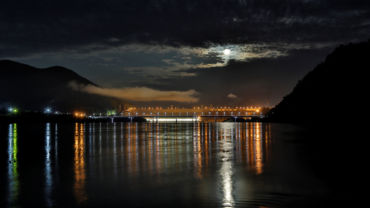Image Credit: REUTERS/Gary Hershorn
Client engagement is a broad concept. When asking a panel of legal professionals what ‘client engagement’ means they are likely to respond with a variety of answers. Some of those answers will depend on the individual and how closely they work with their law firm’s clients. Other answers will be informed by the law firm’s culture and approach. Still others will respond based on their current capabilities—and what they wish they could do with client engagement.
So how should client engagement be defined? Is client engagement about responsiveness and customer care? Or is it the user experience, legal service delivery, or marketing?
Each of these elements do indeed matter to law firms and all play a role in good client engagement. But they are not all created equally. Some elements of client engagement are easier to address than others, whilst others are more of a priority to the client than to the firm. Some are simply more urgent than others, with the potential to affect the bottom line if left unaddressed. What’s needed is a disciplined perspective; a framework that firms can use to organise the elements of client engagement and to define the behaviours and technology needed to move forward and achieve success for both client and firm.
One such framework is the AAA approach to client engagement: Access, Awareness, and Action.

Access
Granting reliable and easy access to firms, people, and client work eliminates the blind spots that can plague legal matters. It removes the mystery surrounding work and creates a stronger partnership between lawyers and their clients. With access, it’s easy for clients to connect with their lawyers or legal teams when they need them. It’s easy to share, review, sign, or reject documents in real-time. It’s easy to know the lay of the land – without having to ask for a status update.
Awareness
Think of awareness as the new client engagement currency. Customers around the world are clamouring for the awareness that digital technology can provide. For example, DHL and Uber generate tracking numbers and provide an estimated time of arrival to give customers transparency and manage their expectations of delivery times. It would be hard to return to the ‘sit and speculate’ approach. That’s because the technology in these examples delivers peace of mind and builds anticipation. It creates an emotional investment in the status of the transaction. To give another example, order a takeaway online and track the order. There is palpable joy and anticipation in seeing tonight’s dinner status move from ‘preparing order’ to ‘en route’.
Those examples might seem trivial, but by giving clients an awareness of their legal matter, firms are opening-up a whole new world of transparency with client engagement. Even a valuable service like external legal advice is a significant line item on the client’s own expense account. It is, therefore, important to deliver that value in a way that is obvious and consistent. Obvious because no client should have to wonder where they stand. Consistent because it breeds trust and loyalty in a highly competitive market.
Action
Law firms want to engage with clients and see a ROI on portals and digital tools, and to make those places functional. Access and awareness are vital, but effective client engagement includes more than showing and sharing alone. It needs to have an element of action. Firms should ask what is possible given the legal technology at their disposal, then make it a reality.
The actions that firms set for clients may overlap with the access discussed above. Document management and signatures spring to mind. But today’s flexible and powerful platforms can be used to create so much more. Imagine customised workflows and toolkits that align your firm’s capabilities with client needs. Interactive document builders and self-service legal experiences—all delivered in a digital experience that reflects today’s remote workforce. Indeed, Thomson Reuters’ HighQ mobile friendly client dashboards help firms with standardisation, customisation, and prioritisation.
It’s an understatement to say that client engagement is a deep dive. No single article can hold all the secrets to success in this arena. But if law firm is looking for a way to think about client engagement—especially from a digital or technological perspective—consider the AAA approach: Access, Awareness, and Action. Hit these three marks, and your law firm will be on the road to success.



